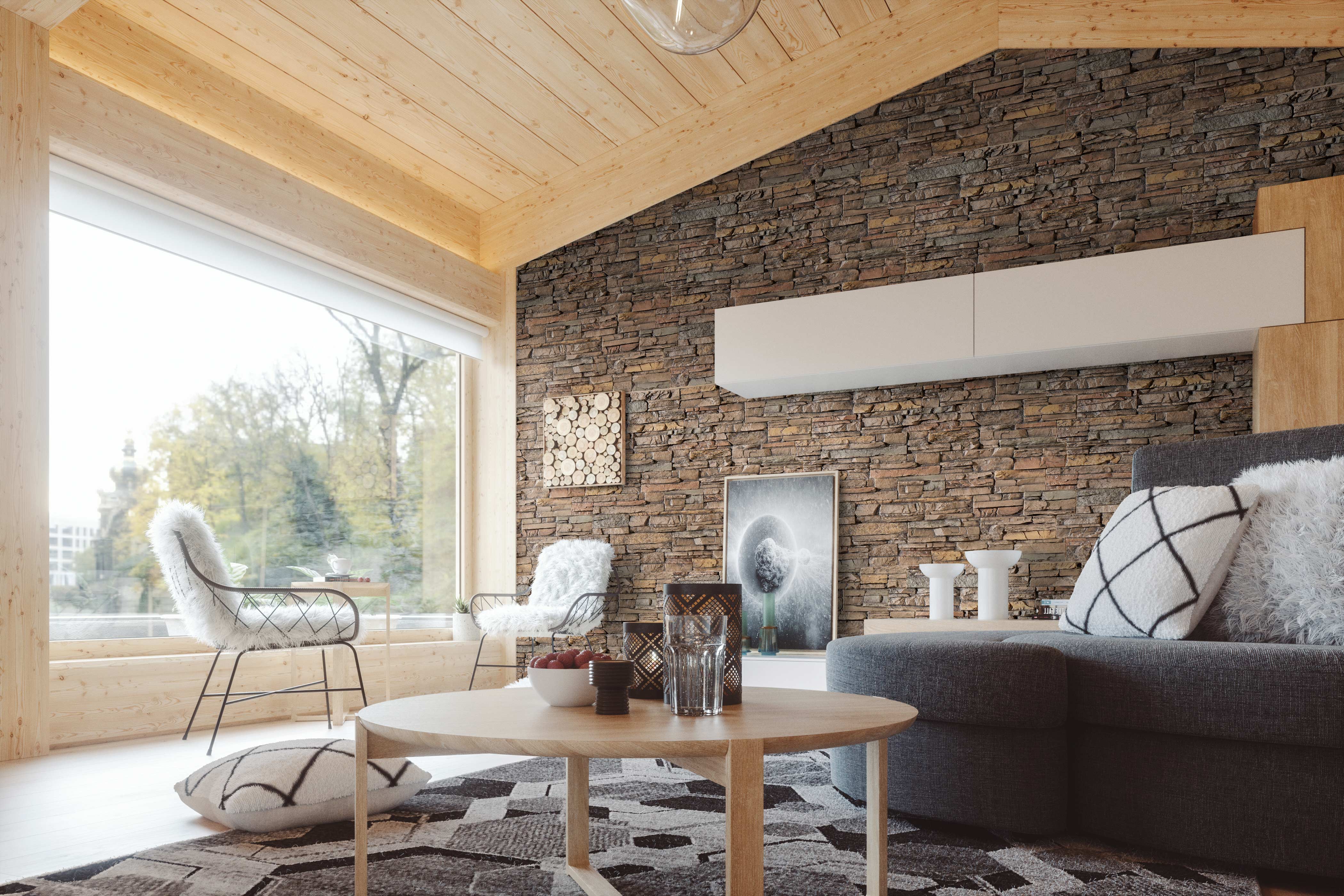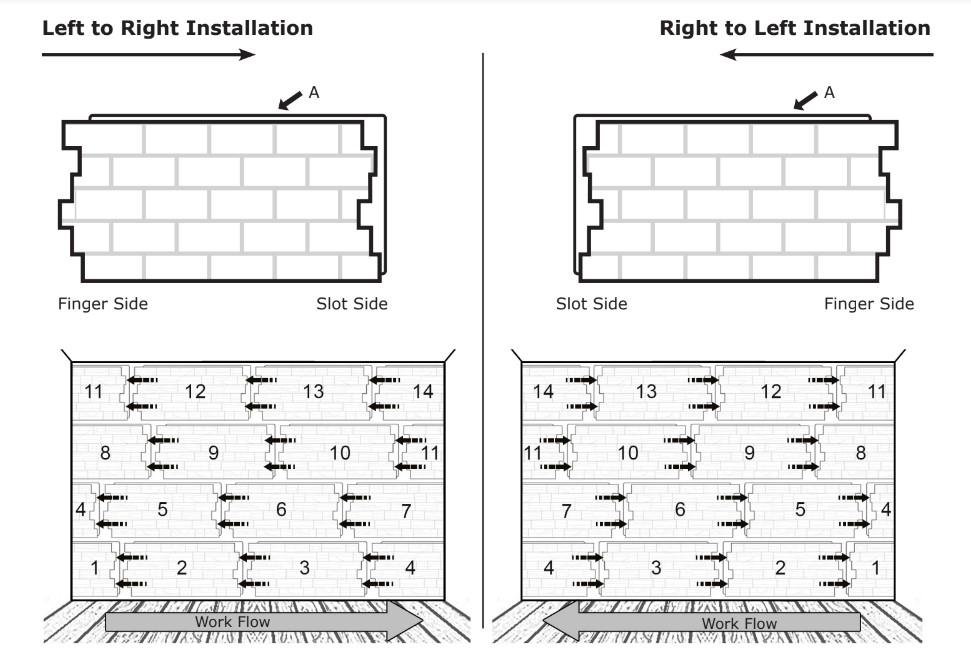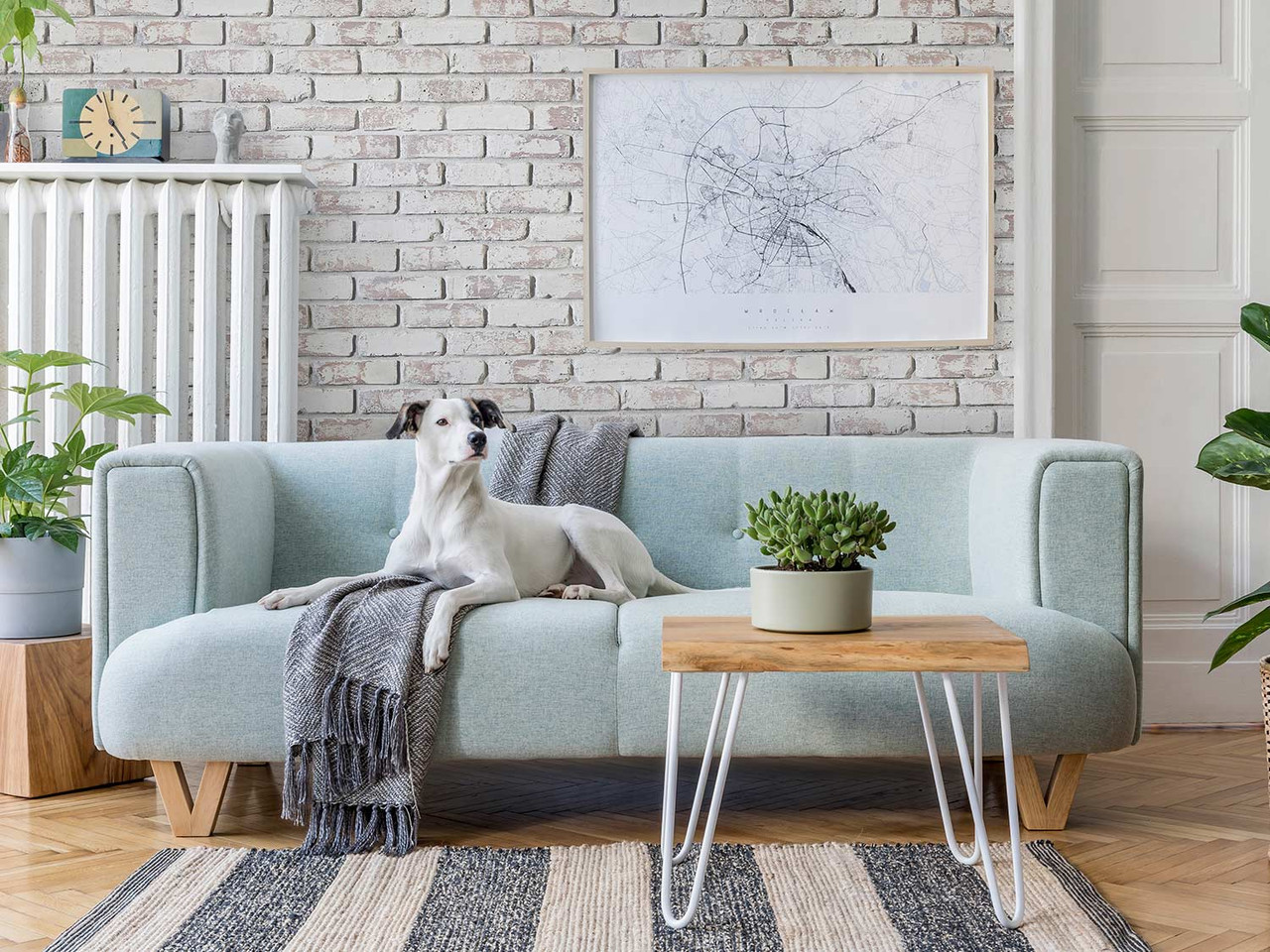
Faux wall panels are a popular interior feature that can instantly transform the look and feel of a room. Unlike real brick and stone, faux wall panels are lightweight, affordable, and DIY friendly. However, with all home décor, trends come and go. What you liked a few years ago may not match your taste now. Luckily, the wall paneling removal process is easy to do yourself.
So if your faux brick fireplace surround is a little dated, or you’d like to change the look of your faux stone accent wall, this blog shows you how to remove wall panels and install new ones.
Table of Contents
- How to Remove Wall Panels
- Wall Panel Removal Tips
- How to Install New Wall Panels
- Freshen Up Your Room With New Wall Paneling
How to Remove Wall Panels
Whether you want to remove a faux brick wall or replace a faux stone fireplace surround, the process is the same. Panels are easy enough to remove yourself, but if you have questions, contact our Architectural Consultants.
If you previously installed faux wall panels using our installation guide, you probably used construction adhesive and screws. To remove the panels, you’ll have to do the reverse.
1. Prepare the Room
Before you begin, set up your work area by covering the floor and anything else you want to protect with a large tarp. We recommend removing furniture from the area completely.
2. Gather Your Tools and Materials
Next, gather the tools and materials needed to remove the panels:
- A screwdriver or drill
- A hammer
- A crowbar or tool to pry off the paneling
- A paint scraper to remove construction adhesive
3. Remove Screws From the Paneling
If you used screws to attach your paneling to the wall, remove them with a drill or screwdriver. If your screws are covered with caulk or wood filler, you may have to do a bit of searching to find them.
If nails were used to install the panels, you can skip this step. Nails should come out as you pry the panels away from the wall.
4. Gently Pry Panels Away From the Wall
Once any anchoring screws have been removed, pull the panel away from the wall using the back of a hammer or a pry bar. Repeat this with each panel until they are all removed.
5. Remove The Construction Adhesive
Using a paint scraper, remove the old construction adhesive from the wall. Keep the paint scraper flat against the wall while you gently scrape to remove old adhesive.
For any stubborn areas, you can use a hammer and chisel to gently tap away at the construction adhesive. Again, be sure to keep your chisel as parallel to the wall as possible to minimize any damage to the sheetrock.
6. Prepare the Wall for New Panel Installation
Once all the construction adhesive has been removed, prepare your space for new panel installation.
Wall Panel Removal Tips
During the wall panel removal process, keep these tips in mind.
- Before removing panels, remove any outlet covers, light switches, pictures, and shelving from the wall.
- Make sure construction adhesive and debris are removed from the wall before installing new panels.
- Never use a heat source to melt the adhesive.
How to Install New Wall Panels
 Denver Dry Stack Faux Stone Wall Panels in Terra Brown
Denver Dry Stack Faux Stone Wall Panels in Terra Brown
Once you’ve removed your old panels and wiped the surfaces clean, you’re ready to begin installing your new panels to drywall.
Installing faux brick and stone paneling is an easy, DIY project that can be done using simple tools and materials. You probably have most of the tools on hand already! Below is an overview of the process. When you’re ready to install, follow our detailed step-by-step installation instructions.
Installing New Faux Wall Panels: How to Get Started
Before installation, make sure your installation surface is in good, sound condition. If your installation surface is damaged from panel removal, be sure to fix it first.
Then, gather the following tools and materials:
- Caulk gun
- Chalk line/laser
- Clean cloth
- Color-coordinating textured caulk
- Cotton swabs
- Deck screws
- Level
- Loctite PL Premium 3X Construction Adhesive
- Panels
- Pencil
- Safety glasses
- Screw gun/drill driver & driver bits
- Small paint brush
- T-Square
- Tack cloth
- Tape measure
- Touch-up kit
- Water
- Wood cutting saw with finish blade
Tip:
(1) tube of Loctite PL Premium 3X adhesive is typically needed for every (3) panels
(1) tube of textured caulk is typically needed for every (4) panels
Prepare for Installation
Your panel installation will run left to right or right to left depending on your panel style. To determine your installation workflow, orient one of your panels so that the flat lip on the long side (A) is up.
If the fingers project to the left, the installation will run left to right. If the fingers are on the right side of the panel, the installation will go right to left.

If you’re working with corners, use our corner installation instruction sheet.
Step 1: Orient Panels and Determine Installation Order
Orient each of the panels so that the flat lip on the long side (A) is up.
Frequently the panels will have “A” and “B” stamped on the flat lip (A) to indicate the different molds. When both are available, try to alternate between A and B panels for a more realistic finished look.
Step 2: Prepare Your Installation Surfaces
To ensure a tight bond between the panel and the wall, use a tack cloth to remove sawdust and dirt on the drywall.
Step 3: Trim the First Panel
Turn your first panel over and mark where you intend to cut the panel. Trim the panel using a wood cutting saw with a finish blade. Cut off at least 1⁄4 of the panel to minimize waste.
Use the slot side of the panel first. Reserve the finger side for later.
Step 4: Draw a Level Line
Using a level, find the high point on the floor. Place a full-size panel against the wall and mark the height. Draw a level line the length of the wall.
Step 5: Apply Adhesive
Wipe the back of the panel with a tack cloth to remove debris.
Adhesive and Fastener Installation:
Turn the panel over and apply beads of adhesive to the back of the panel in vertical lines spaced no more than 3” apart. Add a dab of adhesive to the back of each finger.
Adhesive-Only Installation Over Concrete/ Masonry/Metal:
Turn the panel over and apply beads of adhesive in vertical lines starting 2” from the edge and in 6” increments along the interior of the panel. Then add a dab to the back of each panel finger.
Step 6: Adhere Panel to the Wall
Using a slight twisting motion, adhere the panel to the wall. Ensure the panel is level and lines up with the level line and is plumb with the edge of the wall.
Step 7: Screw Panel to the Wall
If you’re using the adhesive-only method, skip this step.
Place 1 screw per foot along the perimeter and 1 screw per square foot in the middle of the panel. Screws should be slightly recessed. Place screws under protruding rocks or in grout lines to make them less noticeable.
Tip: Do not over-tighten the screws.
Step 8: Add Adhesive and Caulk
Add adhesive to the lip of the panel about 1” from the face. Then, apply a bead of textured caulk where the face meets the panel. For the most realistic look, add caulk during this step.
Remove any excess adhesive or caulk with a damp cloth.
Step 9: Repeat Steps 5-8
Butt the panels tightly together, and follow your level line. Dry fit each panel before applying adhesive to ensure it fits flush. Trim if necessary. Trim the last panel on the row from the finger side.
Wipe off any excess caulk or adhesive before it dries.
Step 10: Start the Next Row
Start the next row directly above the first panel. Trim the first panel of the next row so the seams will be offset.
Before installing each panel on the next row apply adhesive to the top lip of the panel below it. When placing the next panel, make sure it fits tightly with the panel below. Panels should come together to create a shiplap joint.
Step 11: Touch-Up as Needed
Add a bead of caulk to seal any mitered joints and where a panel butts against another surface (like an adjoining wall).
If your touch-up kit contains a base coat, use a cotton swab to apply a light layer of the base coat. Allow it to dry completely.
Using a paint brush, apply paint then dab with a soft cloth to blend and allow to dry completely.
If your touch-up kit contains a wash, apply the wash using a paint brush and blend it with a soft cloth. If the bottle is labeled “wash concentrate” add tap water to the neck of the bottle and mix it before using.
Freshen Up Your Room With New Wall Paneling
 Old Medford Faux Brick Wall Panels in Whitewash Brick
Old Medford Faux Brick Wall Panels in Whitewash Brick
Faux wall panels are so easy to remove and install, that your home can always be on-trend!
Whether brick or stone, faux wall panels come in a variety of authentic colors and textures to meet your design goals. Faux panels are beautiful, cost-effective, and perfect for upgrading kitchens, living rooms, bedrooms, and more.
To get started, click the button below to check out our collection of faux brick and stone wall panels. If you can’t decide, order samples of your favorite styles!
Need help or have questions?